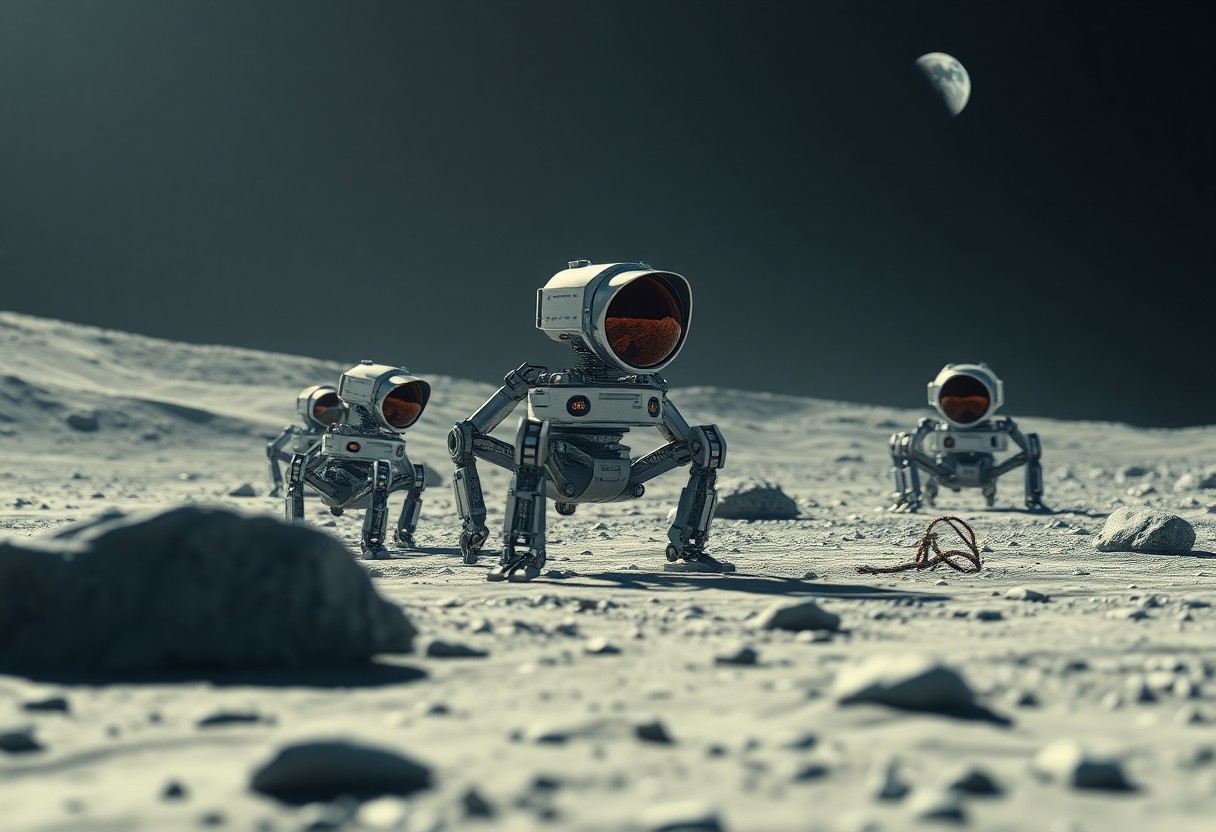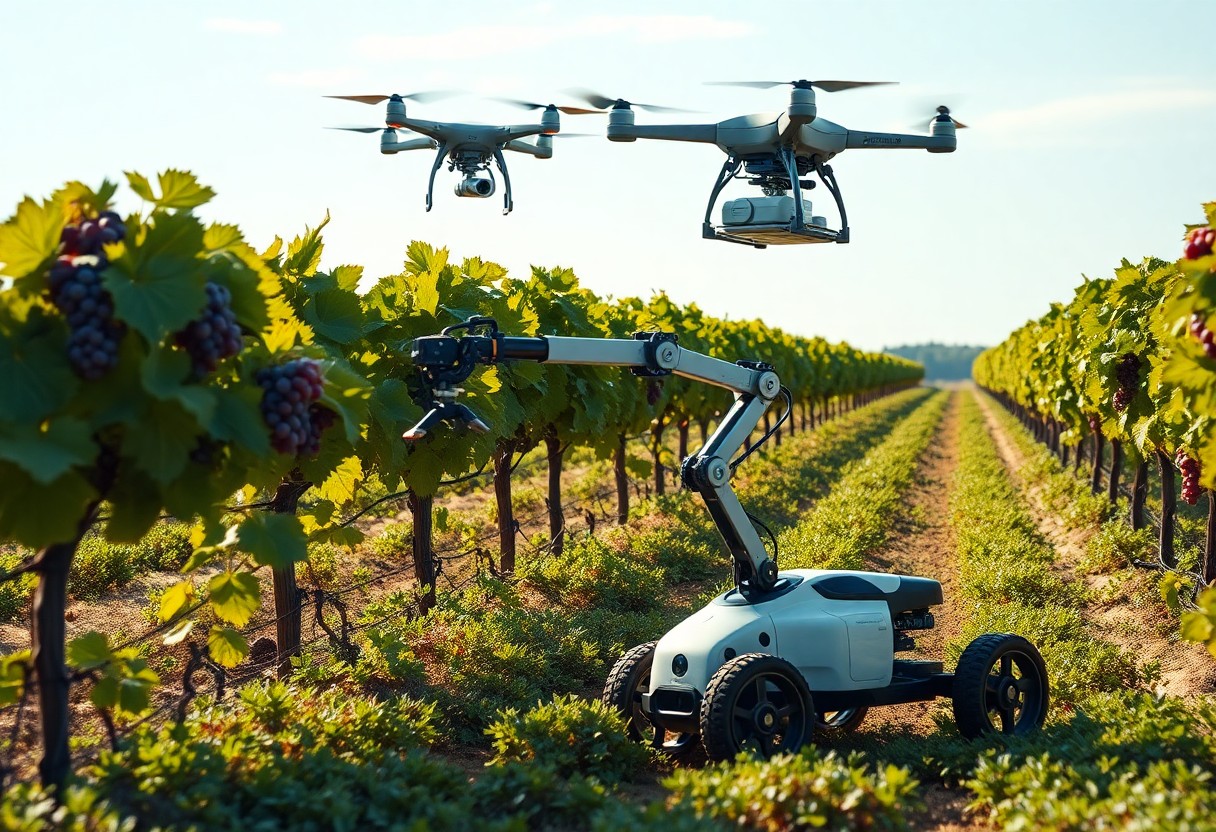Most experts agree that the future of human existence may extend beyond Earth, and you might be wondering how we can create lasting habitats in such hostile environments. The development of moon robots could play a pivotal role in achieving sustainable extraterrestrial living. These robotic systems can survey, construct, and maintain habitats while minimizing human risk and resource expenditure. In this blog post, you will explore the significant advancements in lunar robotics and how they might pave the way for your future among the stars.

The Importance of Sustainability in Space Exploration
A sustainable approach to space exploration not only minimizes environmental impact but also ensures the longevity of human presence beyond Earth. As you consider future missions, it’s vital to adopt strategies that balance resource utilization and ecological preservation, fostering the development of self-sufficient habitats. This focus on sustainability allows you to explore the universe with a mindset geared towards responsible stewardship of both celestial and terrestrial environments.
Defining Sustainable Habitats
Below, you will explore the concept of sustainable habitats, which are designed to efficiently utilize local resources while minimizing waste. These habitats take into account energy management, waste recycling, and habitat construction to ensure a self-sustaining living environment for future lunar or Martian settlers, allowing you to thrive far from Earth.
Challenges of Extraterrestrial Living
On your journey to establish extraterrestrial habitats, you will face several challenges, including resource scarcity, harsh environmental conditions, and the psychological effects of isolation. Overcoming these obstacles requires innovative solutions and careful planning to ensure that your living conditions are comfortable and sustainable.
Space presents unique challenges for living away from Earth. Resource scarcity means you must be highly efficient in utilizing materials, whether they are sourced on-site or brought from Earth. Extreme temperature fluctuations, radiation, and micrometeorite impacts also pose significant threats to infrastructure and human safety. Additionally, the psychological effects of prolonged isolation can impact mental well-being, making it imperative to create environments that support both physical and emotional health. Achieving success in these areas will play a vital role in your ability to create sustainable extraterrestrial habitats.
The Role of Robotics in Space Missions
While you explore the possibilities of sustainable extraterrestrial habitats, consider the growing importance of robotics in space missions. These advanced machines not only enhance our understanding of the cosmos but also help reduce risks and costs associated with human presence in hostile environments. By automating tasks such as data collection, construction, and maintenance, robots can play a pivotal role in establishing and supporting life beyond Earth.
Historical Context of Lunar Robotics
At the dawn of space exploration in the mid-20th century, early lunar missions laid the foundation for the development of robotic technologies. The successes of the Ranger and Surveyor missions demonstrated the potential of robotic systems to gather valuable information about the Moon’s surface. These pioneering efforts paved the way for future advancements, showcasing how robots could venture beyond Earth’s atmosphere to help prepare for human exploration.
Current Advancements in Robot Technology
On the forefront of innovation, today’s robotic technologies are evolving at an unprecedented pace, enhancing their capabilities for space missions. Modern robots are equipped with artificial intelligence, enabling them to perform complex tasks with minimal human intervention. Advances in materials science and energy storage also mean that these machines can operate longer and more efficiently in extreme environments, making them vital in establishing sustainable habitats on the Moon and beyond.
Robotics is fundamentally transforming the landscape of space exploration, enabling you to imagine a future where lunar habitats are supported by intelligent machines. With the integration of AI and machine learning, robots can adapt to unexpected challenges, making autonomous decisions to ensure mission success. Innovations such as 3D printing and modular design empower these systems to construct habitats and infrastructure on-site, utilizing local resources for sustainability. By harnessing these advancements, you can participate in realizing a vision of thriving extraterrestrial communities, gradually paving the way for human presence beyond Earth.
Examples of Moon Robots in Development
Any discussion of sustainable extraterrestrial habitats inevitably brings up the various moon robots currently in development. These innovative machines are being designed to assist in the exploration, resource extraction, and construction of lunar habitats. From autonomous rovers to advanced drillers, a diverse range of robotic technologies is being explored to ensure a successful human presence on the Moon.
Leading Organizations and Their Projects
Leading organizations, such as NASA and private companies like Astrobotic, are at the forefront of moon robot development. NASA’s Artemis program aims to send robotic missions ahead of human landings to prepare the lunar surface for sustainable exploration. Similarly, Astrobotic’s Peregrine lander will deliver payloads to the Moon, helping gather valuable data for future human settlers.
Innovative Features and Functionalities
Projects are integrating state-of-the-art technologies to enhance the capabilities of moon robots. These machines will not only explore but also perform construction tasks using in-situ resources, adapt to different lunar terrains, and communicate seamlessly with each other and with control centers on Earth. This versatility is vital for creating habitats that can sustain long-term human presence.
Indeed, the innovative features of these moon robots include advanced mobility systems designed for the Moon’s uneven surface, autonomous navigation to minimize human intervention, and the ability to analyze lunar soil for building materials. Some will even be equipped with 3D printing technologies to manufacture habitats on-site. These functionalities are pivotal for reducing the weight and cost of missions while maximizing long-term sustainability on the lunar surface.
Potential Solutions Offered by Moon Robots
After exploring the vast possibilities of lunar robots, it becomes clear that their role in sustainable extraterrestrial living is significant. These machines can tackle imperative tasks, enabling efficient resource management, habitat construction, and maintenance. By employing advanced technology, lunar robots might pave the way for long-term human presence on the Moon and potentially beyond.
Resource Management and Utilization
For effective sustainable living on the Moon, harnessing local resources is vital. Moon robots can identify and extract imperative materials such as water ice and regolith, ensuring a stable supply of water and construction resources. By recycling waste and optimizing resource usage, these robotic systems can help create a self-sufficient ecosystem, reducing reliance on Earth and allowing you to thrive in the lunar environment.
Construction and Maintenance of Habitats
Against the backdrop of harsh lunar conditions, constructing and maintaining habitats presents unique challenges. However, with the help of dedicated lunar robots, you can automate many of the construction processes. These machines can transport materials, assemble structures, and perform routine maintenance with precision and efficiency, ensuring your living quarters remain safe and functional.
Even as you contemplate the intricacies of habitat construction on the Moon, lunar robots stand out as indispensable partners. They are capable of building habitats using in-situ resources, leading to reduced costs and faster project timelines. Moreover, their continuous operation can minimize human risk, allowing you to focus on exploration and research, knowing that your lunar base is in competent mechanical hands.
Environmental Considerations in Lunar Habitats
Your approach to establishing lunar habitats must take into account various environmental factors. The Moon’s unique ecosystem, however sparse, should be protected as you develop structures for human activity. You will need to balance human needs with the preservation of the lunar environment, ensuring sustainability in all future endeavors. By considering the impacts of construction, resource utilization, and waste management, you can create habitats that minimize disruption to the Moon’s natural state.
Minimizing Ecological Impact
Minimizing ecological impact is imperative in the design of lunar habitats. As you build, you should prioritize using local materials and techniques that preserve the lunar surface. This can involve implementing technologies that require less energy and produce minimal waste. By adopting sustainable practices, you can reduce the carbon footprint of space exploration and protect the Moon’s unique environment during your missions.
Life Support Systems and Recycling
Around your habitat, efficient life support systems and recycling processes will be paramount for sustainability. You will need to create closed-loop systems that recycle air, water, and waste, reducing the need for constant resupply from Earth. By utilizing advanced technologies, you can ensure that resources are used wisely and that every element within the habitat contributes to its overall functionality.
Even advanced life support systems must operate entirely on a recycling framework to succeed on the Moon. This entails capturing carbon dioxide exhaled by inhabitants and converting it back into breathable oxygen, as well as purifying water used for drinking and other purposes. By harnessing technologies such as microbial fuel cells and hydroponics, you can cultivate food while processing waste, thus closing the loop on resource management. Each of these systems will enable not just survival, but a thriving lunar community, reducing reliance on Earth and preserving the Moon’s fragile ecology.
Future Prospects for Moon Robots and Sustainability
Despite growing interest in sustainable extraterrestrial habitats, the potential of moon robots continues to evolve. These automated systems can play a vital role in building self-sufficient lunar environments, powering human exploration and research. By utilizing local resources like regolith for construction and extracting water from the lunar poles, moon robots could help you establish sustainable living conditions that support long-term habitation and scientific discovery.
Upcoming Missions and Collaborations
Below are several upcoming missions and collaborations aimed at deploying advanced robotic technologies on the Moon. Space agencies like NASA and private companies are teaming up to create reliable lunar rovers and landers designed for resource extraction and habitat construction. These initiatives focus on developing the necessary infrastructure for sustainable living and are set to yield valuable insights into the challenges of extraterrestrial habitats.
Vision for Permanent Lunar Habitats
Between the ongoing advancements in robotic technology and collaborative international efforts, the vision for permanent lunar habitats is becoming more tangible. This involves creating moon bases that harness local resources, ensuring that your future lunar settlers can thrive in a self-sufficient environment. The designs prioritize sustainable living, recycling materials, and utilizing renewable energy sources, thus paving the way for humanity’s next great leap into the cosmos.
To achieve these permanent lunar habitats, you will need to focus on multi-faceted approaches, integrating robotics, life support systems, and sustainable resource management. The vision includes habitats that can adapt to harsh lunar conditions while promoting a circular economy, where waste is minimized, and materials are reused. This means that your involvement in supporting, advocating for, or directly participating in these future missions will be crucial as humanity seeks to not only visit but genuinely inhabit the Moon in a sustainable manner.
Summing up
From above, you can see that moon robots represent a significant advancement in developing sustainable extraterrestrial habitats. By leveraging robotic technologies for resource utilization, construction, and maintenance, you can envision a future where humankind thrives beyond Earth. These autonomous systems will not only reduce the cost and risk associated with human presence but also enable efficient data collection and environmental monitoring. Embracing this innovation can lead you toward a more sustainable and viable presence on the Moon, paving the way for future exploration and habitation across the solar system.







